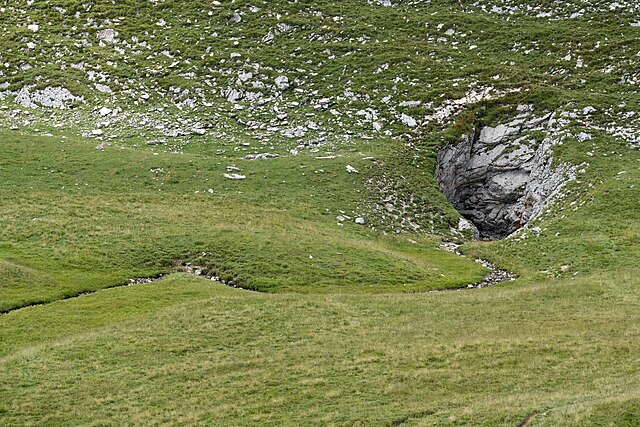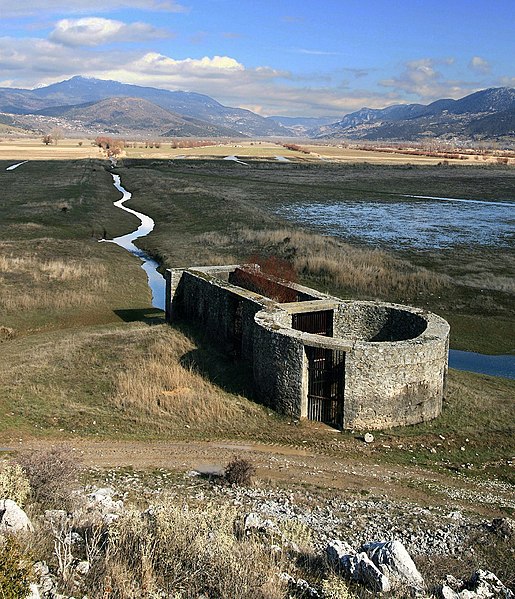A ponor is a natural opening where surface water enters into underground passages; they may be found in karst landscapes where the geology and the geomorphology is typically dominated by porous limestone rock. Ponors can drain stream or lake water continuously or can at times work as springs, similar to estavelles. Morphologically, ponors come in forms of large pits and caves, large fissures and caverns, networks of smaller cracks, and sedimentary, alluvial drains.
Ponor Monte de Fóses
The Dobra River enters a 17 km long cave system at Đulin ponor in Ogulin, Croatia.
Polje of Feneos, Greece, lake until late 19. Century. Rain showers flood large parts even today
Closeup of ponor in Câmpeneasca cave near Izbuc village, Romania
Karst is a topography formed from the dissolution of soluble carbonate rocks such as limestone, dolomite, and gypsum. It is characterized by features like poljes above and drainage systems with sinkholes and caves underground. More weathering-resistant rocks, such as quartzite, can also occur, given the right conditions.
Škocjan Caves, Slovenia
Lijiang fengcong (cone karst) in Guilin as part of the South China Karst.
Karst formation of the Serra de Tramuntana
Global distribution of major outcrops of carbonate rocks (mainly limestone, except evaporites)








